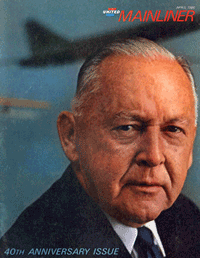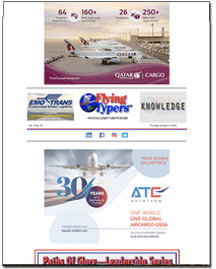|
Lior Ron has spent the last dozen year
of his professional life imagining new realties.
As a member of Google’s mapping
division, he helped scale Google Maps from 10 million users to more than
1 billion. Later, he co-founded Otto, a self-driving trucking company
Uber acquired in 2016.
Now Mr. Ron is taking on the centuries-old
logistics market as the head of Uber Freight, shepherding the enterprise’s
daring aim to bring the offline logistics universe online.
“We fundamentally believe there’s
a new era of opportunity in logistics,” Ron said at the 38th annual
William A. Patterson Transportation Lecture hosted by the Northwestern
University Transportation Center. “Technology streamlines things,
connects things and that builds trust in physical networks.”
Understanding The
Past And The Pain Points
Lior Ron began his 75-minute program
traveling back thousands of years to the earliest eras of trade. He reviewed
game-changing innovations and highlighted Uber Freight’s vision
for a more efficient logistics landscape.
As trade became more commonplace in
early civilizations, Lior Ron describes roads as the first technological
breakthrough – “the initial unlock,” he said.
“Later innovations such as currency
and containerization, a 20th century development, ushered in new levels
of trade growth and logistics, while digital-age advancements like Google
Maps and warehousing software have propelled new growth opportunities,
with the logistics market currently representing 12 percent of global
GDP.”
“There’s an even greater
need for solutions that bring value to industry stakeholders besieged
by rising costs, a 98 percent driver turnover rate and a litany of inefficiencies
ranging from long delays at facilities to “empty” miles in
which trucks run with vacant trailers.
“[Logistics] is running in the
wrong direction … and the entire ecosystem is struggling,”
Ron said.
According to Lior Ron, recent technological
developments such as a mobile-enabled workforce, fully connected assets
and an intelligent, self-learning network have created “a perfect
storm” for improvements.
Leveraging these technological advancements,
Uber Freight’s business-to-business app – clutching many of
the same user friendly, supply-and-demand tenets of its ubiquitous consumer
ride-share platform – matches carriers and shippers to create logistics
on demand.
“We want to connect the right
truck at the right time with the right shipper at the right price, and
make this entire process as streamlined as possible,” he said.
He also noted the viability of self-driving
trucks.
Showing a brief animated video to
illustrate the potential of autonomous trucking, Ron said a driver could
begin a trip at an origin facility and then transfer that load to a self-driving
truck for ramp-to-ramp highway haul before another local driver receives
the load and delivers it to the final destination.
“Those first and last miles
remain critical,” Ron said.
Ending his Patterson Lecture with
a lively and transparent Q&A session, Ron addressed a range of audience
questions around issues such as barriers to working with shippers, Uber
Freight’s plans for international expansion and the feasibility
of truck platooning. He also touched on innovations in warehousing and
loading trucks and said technology continues “stepping up the requirements
to run a business efficiently.”
Geoffrey
 Editor’s
Note: Patterson United . . . At Northwestern University Transportation
Center, the Annual William A. Patterson Distinguished Transportation
Lecture is named for William A. "Pat" Patterson. In 1980,
the NUTC established the Lecture as an integral part of the Patterson
Endowment. It has since become an annual highlight at Northwestern
University, drawing influential speakers from all facets of the transportation
industry. Editor’s
Note: Patterson United . . . At Northwestern University Transportation
Center, the Annual William A. Patterson Distinguished Transportation
Lecture is named for William A. "Pat" Patterson. In 1980,
the NUTC established the Lecture as an integral part of the Patterson
Endowment. It has since become an annual highlight at Northwestern
University, drawing influential speakers from all facets of the transportation
industry.
William A. "Pat" Patterson was a central figure in the United
States air transport industry for more than four decades. He served
as president and chairman of United Airlines from 1934 until his retirement
in 1966. He was a life trustee of Northwestern University and was
instrumental in the establishment and strategic leadership of the
Transportation Center. |
|




 Vol.
18 No. 70
Vol.
18 No. 70